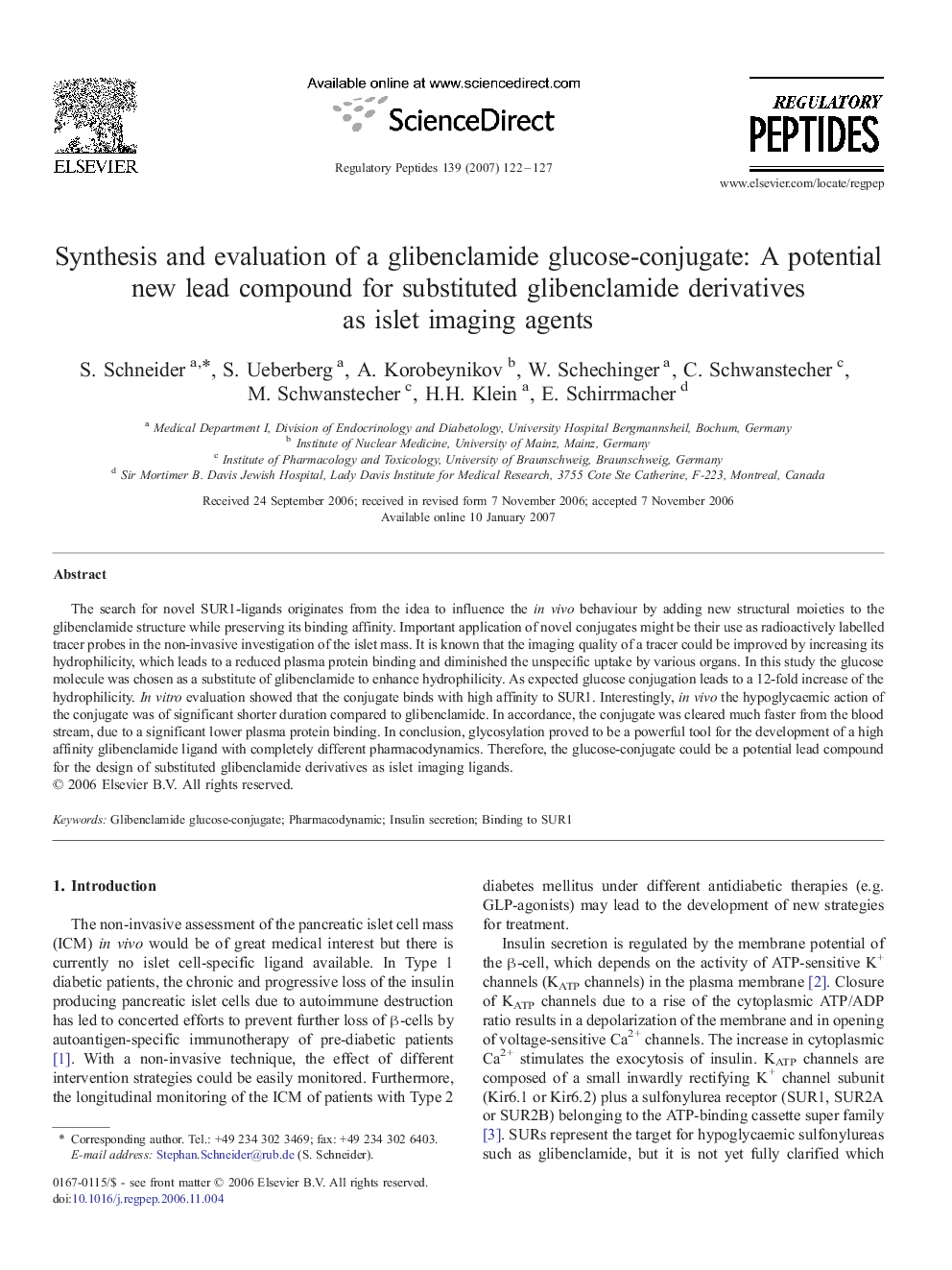| Article ID | Journal | Published Year | Pages | File Type |
|---|---|---|---|---|
| 2023450 | Regulatory Peptides | 2007 | 6 Pages |
The search for novel SUR1-ligands originates from the idea to influence the in vivo behaviour by adding new structural moieties to the glibenclamide structure while preserving its binding affinity. Important application of novel conjugates might be their use as radioactively labelled tracer probes in the non-invasive investigation of the islet mass. It is known that the imaging quality of a tracer could be improved by increasing its hydrophilicity, which leads to a reduced plasma protein binding and diminished the unspecific uptake by various organs. In this study the glucose molecule was chosen as a substitute of glibenclamide to enhance hydrophilicity. As expected glucose conjugation leads to a 12-fold increase of the hydrophilicity. In vitro evaluation showed that the conjugate binds with high affinity to SUR1. Interestingly, in vivo the hypoglycaemic action of the conjugate was of significant shorter duration compared to glibenclamide. In accordance, the conjugate was cleared much faster from the blood stream, due to a significant lower plasma protein binding. In conclusion, glycosylation proved to be a powerful tool for the development of a high affinity glibenclamide ligand with completely different pharmacodynamics. Therefore, the glucose-conjugate could be a potential lead compound for the design of substituted glibenclamide derivatives as islet imaging ligands.
